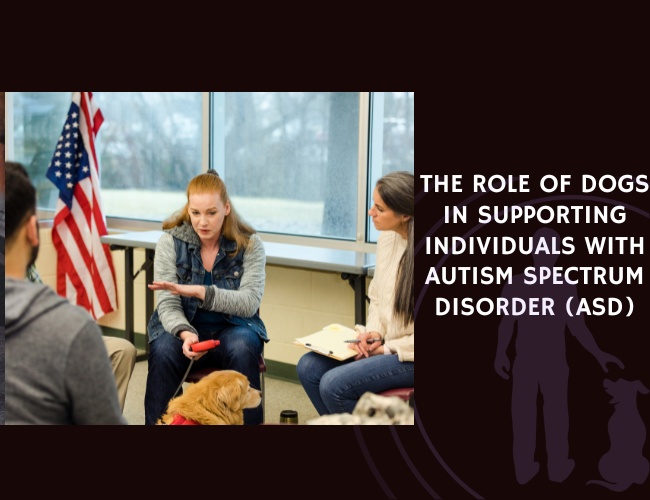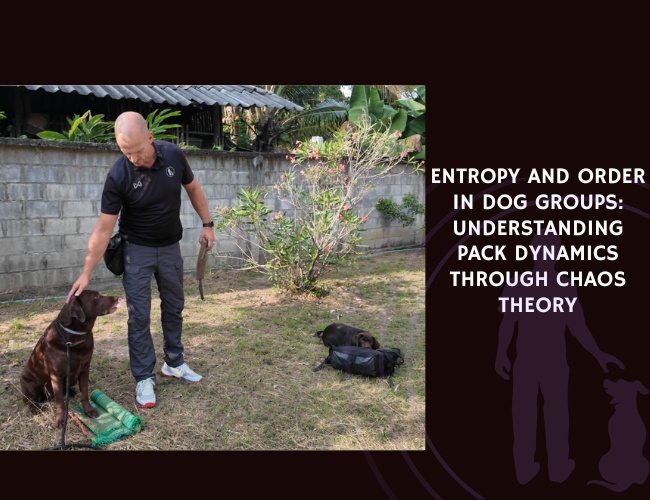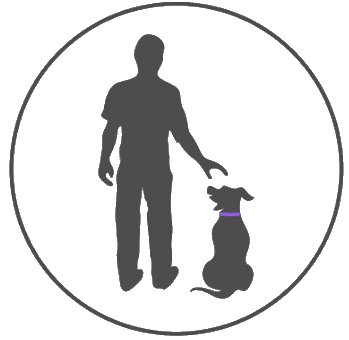Introduction to Autism Spectrum Disorder (ASD)
Core Characteristics of ASD
Autism Spectrum Disorder (ASD) is a developmental condition marked by challenges in communication, social interaction, and behavior. Individuals with ASD often struggle with:
- Social Interaction Difficulties: They may find it hard to form friendships, understand social cues, or engage in typical communication. Eye contact, facial expressions, and natural conversation flows are areas where individuals with ASD might need extra support.
- Sensory Sensitivities: People with ASD may be overly sensitive to sensory stimuli such as bright lights, loud noises, certain textures, or specific smells. This heightened sensitivity can lead to discomfort or even meltdowns.
- Repetitive Behaviors: A strong preference for routine and repetitive actions, such as hand-flapping, rocking, or lining up objects, is common among individuals with ASD. These behaviors provide comfort and predictability in their daily lives.
Impact of ASD on Daily Life and Emotional Regulation
The challenges associated with ASD significantly affect daily functioning for both individuals and their families. Here’s how:
- Daily Life: Interacting with others, participating in social activities, and handling changes in routine can be immensely difficult. For instance, a simple visit to a grocery store might become overwhelming due to sensory overload or deviations from their expected environment.
- Emotional Regulation: Many individuals with ASD struggle to manage their emotions, leading to heightened anxiety and frequent meltdowns. Emotional dysregulation can impact their ability to cope with stress and navigate day-to-day activities effectively. Recognizing and expressing emotions is often intricate, further complicating social interactions.
The Need for Innovative Support Solutions
Given these challenges, there is a need for innovative support solutions. Traditional therapies may not be sufficient to address the broad range of ASD symptoms effectively. Here’s where support dogs come in, playing a unique and invaluable role:
- Emotional & Sensory Regulation: A dog’s calming presence and routines can help individuals with ASD manage their emotions and reduce sensory overload. Dogs trained in deep pressure therapy, for instance, can help mitigate anxiety episodes by providing comforting pressure.
- Social Skills and Communication: Interacting with a dog can serve as a bridge to improve social skills and encourage communication. This can make it easier for individuals with ASD to engage with their peers and the wider community.
Transitioning seamlessly from understanding the complexities of autism to solutions, the following sections will explore how different types of support dogs serve as companions and therapeutic aids for those with ASD.
Types of Support Dogs for Autism
Dogs have emerged as invaluable partners in supporting individuals with Autism Spectrum Disorder (ASD). Depending on their training and roles, these dogs serve different purposes and provide unique benefits. This chapter explores autism service dogs, therapy dogs, and companion dogs (also known as Emotional Support Animals or ESAs), emphasizing their specific functions, training, and the critical support they offer.
Autism Service Dogs
Autism service dogs are professionally trained to assist individuals with ASD by performing specific tasks and ensuring safety. Their specialized skills enhance daily living and provide peace of mind to families. Some of the key roles these dogs play include:
- Task-Specific Assistance: These dogs are trained to perform tasks such as providing deep pressure therapy during anxiety episodes and interrupting repetitive behaviors. By applying calming pressure, they help individuals manage their sensory regulation and emotional responses.
- Safety Tracking: Service dogs are skilled in preventing wandering, a common concern for families with children who have ASD. They are trained to locate and guide individuals back to safety should they attempt to wander off.
- Daily Task Assistance: Beyond safety and sensory regulation, these dogs can also assist with daily tasks like retrieving items, aiding in dressing, and supporting calming routines.
Service dogs undergo rigorous training that can last between 18 and 24 months to ensure they can perform these complex and essential tasks effectively.
Therapy Dogs
Therapy dogs play vital roles in clinical and educational settings, providing emotional support and promoting social engagement. Unlike service dogs, they are not trained for specific tasks but are instrumental in creating therapeutic environments. Their key roles include:
- Emotional Support in Clinical Settings: They are used in therapy sessions, schools, and hospitals to provide comfort and calm through their presence. Their interactions can alleviate anxiety and offer a therapeutic bridge for individuals struggling to engage with their environment.
- Social Skills Development: Especially effective in group interventions, therapy dogs encourage communication and social skills development. Their non-judgmental nature and friendly demeanor make them excellent companions for practicing social interactions and building relationships.
These dogs typically undergo 6 to 12 months of training and require ongoing assessments to maintain their certification. Their positive influence in therapy settings significantly enhances the emotional well-being of individuals with ASD.
Companion Dogs (ESA)
Companion dogs, or Emotional Support Animals (ESA), provide unstructured emotional support and a sense of security for individuals with ASD. While they do not receive specialized training like service or therapy dogs, their impact on emotional stability and daily life is substantial:
- Unstructured Emotional Support: These dogs offer companionship and emotional comfort, helping to reduce feelings of loneliness and anxiety. Their presence alone can bring immense comfort and security in stressful situations.
- Predictability and Stability: By providing consistent companionship, companion dogs help establish routines and predictable interactions crucial for individuals with ASD. This predictability can alleviate anxiety related to transitions and changes in routine.
Companion dogs primarily rely on basic training, focusing on calm interactions and positive reinforcement techniques to foster an emotionally supportive environment.
Each type of support dog brings a unique set of skills and benefits, addressing different aspects of the challenges faced by individuals with ASD. The versatility and companionship provided by these dogs are key components in fostering emotional regulation, enhancing social interactions, and ensuring safety and support in daily living.
As we continue to explore the benefits and considerations of including dogs in the lives of individuals with ASD, it is clear that their role is both profound and transformative.

Benefits of Dogs for Individuals with ASD
Emotional and Sensory Regulation
Dogs have a unique ability to help individuals with Autism Spectrum Disorder (ASD) manage their emotional and sensory sensitivities. Their calming presence can be incredibly therapeutic, especially during moments of anxiety or sensory overload. For instance, dogs trained to perform deep pressure therapy can apply gentle pressure to the individual’s body, which can soothe the nervous system and reduce stress levels. This tactile comfort is often very effective in helping individuals regain emotional control during meltdowns or high-stress situations.
Additionally, interacting with dogs can lead to hormonal changes that promote a sense of well-being. Studies have shown that being around dogs can lower cortisol levels (a stress hormone) while increasing oxytocin levels (a hormone associated with bonding and relaxation).
Social Skill Development
Dogs can significantly enhance social skills and communication for individuals with ASD. Often, children and adults with autism find it challenging to engage in typical social interactions. However, dogs can act as social bridges, making it easier to initiate and sustain conversations with others. Their friendly and non-judgmental nature offers a safe space to practice eye contact, facial expressions, and verbal communication.
For example, therapy dogs in educational settings can encourage social engagement and interaction among peers. This can be particularly beneficial in group settings where social dynamics are more complex. Dogs can also provide opportunities for individuals to practice recognizing non-verbal cues and emotional expressions, both of which are essential components of effective communication.
Establishment of Routines
Routine and predictability are crucial for individuals with ASD, who often prefer structured environments. Dogs thrive on routine, making them perfect companions for establishing consistent daily schedules. Having a dog means adhering to a regular routine for feeding, exercising, and grooming, which can help individuals develop and maintain a sense of order in their lives.
These predictable interactions not only provide a sense of security but can also help reduce anxiety associated with changes or transitions. Knowing that their dog expects certain activities at specific times of the day can make it easier for individuals with ASD to manage their daily tasks and improve their overall stability and independence.
Moving Forward
As we move forward, understanding the multifaceted benefits of support dogs for individuals with ASD underscores the importance of choosing the right type of support dog and ensuring they are properly trained and matched to the individual’s needs. Upcoming sections will delve deeper into the scientific evidence supporting these benefits, as well as explore the specific training and certification requirements for these invaluable canine companions.
Scientific Evidence and Research Findings
Studies Showing Reduced Anxiety and Improved Social Responsiveness
The presence of dogs has been scientifically proven to have a calming effect on individuals with Autism Spectrum Disorder (ASD), primarily by reducing anxiety and improving social responsiveness. Research indicates that children with ASD who have regular interactions with dogs show significant decreases in anxiety levels. These dogs create a predictable and soothing environment, helping to alleviate the stress associated with transitions and unfamiliar situations. Families have reported a noticeable enhancement in the children’s ability to engage socially, facilitated by the non-threatening and supportive nature of these animals.
Brain Activity Changes During Dog Interactions
Remarkably, interactions with dogs can lead to observable changes in brain activity, particularly in areas associated with social bonding and emotional regulation. By using brain imaging techniques like MRI, researchers have found that engaging with therapy dogs can activate regions in the brain responsible for producing oxytocin, a hormone linked to bonding and reducing stress. This release of oxytocin not only helps in calming individuals with ASD but also fosters stronger social connections and improved emotional responses.
Quality of Life Improvements for Individuals and Families
The presence of support dogs not only benefits individuals with ASD but also brings significant improvements in the quality of life for their families. Parents often experience a reduction in stress and an improvement in overall family harmony. This is largely due to the comfort and security the dogs provide, which help in managing the emotional and behavioral challenges presented by ASD. Service and therapy dogs play a critical role in daily routines, enhancing independence and safety by performing specific tasks like preventing elopement and assisting with daily activities.
These positive changes underscore the profound impact that dogs can have on the daily lives of individuals with ASD and their families. By providing both emotional support and practical assistance, these animals help create a more stable and enriching environment, fostering growth and well-being.

Training Requirements and Certification
Training support dogs for individuals with Autism Spectrum Disorder (ASD) requires specialized programs to ensure the dogs can effectively perform their support roles. Let’s dive into the various types of training and certification protocols for each support dog category.
Service Dog Training Protocols
Service dogs undergo an extensive training process, typically lasting between 18 to 24 months, designed to equip them with a wide range of skills and behaviors essential for assisting individuals with ASD.
- Deep Pressure Therapy: Service dogs are trained to provide calming pressure during anxiety episodes. This involves the dog lying across an individual’s lap or pressing their body against the person to help alleviate stress.
- Behavior Interruption Techniques: These dogs learn to interrupt repetitive behaviors by nudging the individual or providing a distraction that can help re-focus their attention.
- Tracking Skills: Vital for safety, service dogs are trained to locate individuals prone to wandering, which is a common concern for families with children who have ASD.
- Obedience in High-Stimulation Environments: Service dogs must perform tasks in distracting and potentially overwhelming settings, ensuring they remain focused and responsive to their owner’s needs.
Therapy Dog Certification Requirements
Therapy dogs, used extensively in clinical and educational environments, need to meet specific certification criteria and undergo continuous assessment to maintain their status.
- Socialization Training: Therapy dogs are trained to interact positively within clinical settings, schools, and hospitals. Their training often spans 6 to 12 months.
- Emotional Support Skills: These dogs must exhibit a calm demeanor and the ability to provide emotional support to children and adults alike, often helping to bridge gaps in social communication.
- Ongoing Assessments: Therapy dog programs require regular evaluations to ensure the dogs’ behavior and performance remain consistent with certification standards.
Basic Training Needs for Companion Dogs
Companion dogs, or Emotional Support Animals (ESA), provide unstructured emotional support and are typically family pets. Their training focuses more on basic obedience and consistency to offer a reassuring presence.
- Positive Reinforcement Techniques: Training methods involve using rewards to encourage desired behaviors, ensuring the dog maintains good conduct.
- Routine-Based Training: Establishing predictable interactions that support the emotional stability of individuals with ASD, such as maintaining set feeding and walking times.
- Calm Interactions: Teaching companion dogs to engage gently and supportively helps to foster a sense of security for their owners, contributing to reduced anxiety and better emotional regulation.
Understanding the rigorous training and certification requirements for each type of support dog underscores the significant role they play in enhancing the lives of individuals with ASD. These dogs are not just pets; they are highly trained professionals making a difference every day.
Next, we’ll explore the suitability of different dog breeds for autism support, focusing on breed characteristics, temperament, and matching them with individual needs and preferences. Stay tuned for insights into finding the perfect canine companion for autism support.
Suitable Dog Breeds for Autism Support
When considering a dog to support an individual with Autism Spectrum Disorder (ASD), breed choice is of utmost importance. Dogs with the right characteristics can dramatically enhance quality of life through their companionship and support. Several breeds stand out for their suitability in these roles, including their temperament, intelligence, and physical attributes.
Characteristics of Recommended Breeds
Labrador Retrievers
Labrador Retrievers are known for their friendly, patient, and gentle nature. These dogs are highly trainable and excel in providing both emotional comfort and task-specific assistance. Their calm demeanor makes them particularly effective at deep pressure therapy, a technique used to soothe anxiety and sensory overload in individuals with ASD.
Golden Retrievers
Golden Retrievers, like Labradors, are renowned for their friendly and patient personalities. They are dependable and highly intelligent, making them quick learners and highly adaptable. Their eagerness to please and consistent behavior help foster a stable and predictable environment, beneficial for those with ASD.
Standard Poodles
Standard Poodles are not only intelligent but also hypoallergenic, making them suitable for a variety of environments and individuals with allergies. Their keen awareness and quick learning capabilities ensure that they can effectively perform tasks and respond to the emotional needs of individuals with ASD.

Temperament Considerations for Autism Support Roles
The temperament of a dog plays a significant role in its effectiveness as an autism support companion. Ideally, the dog should be calm, gentle, and patient. It must be able to handle inconsistent behaviors and unpredictable environments without becoming overly stressed or reactive.
- Consistency: Dogs need to exhibit even-keeled behavior, crucial for creating a predictable environment.
- Trainability: Intelligent breeds that can quickly learn and adhere to commands are more effective in providing required support.
- Sensitivity: A dog with a high level of empathy and sensitivity to human emotions can better respond to the individual’s distress and provide comfort.
Matching Breeds to Individual Needs and Preferences
Selecting the right breed also involves matching the dog to the specific needs and preferences of the individual with ASD. This process often includes:
- Sensory Needs Assessment: Understanding the sensory sensitivities of the individual can influence the choice of breed. For example, hypoallergenic dogs like Poodles may be preferred for those with allergies.
- Activity Level: The energy level of the dog should align with the individual’s lifestyle. Highly active individuals may benefit from energetic breeds, while those who prefer calm environments may find solace in more laid-back dogs.
- Personal Preferences: Including the individual in the decision-making process ensures that the bond between the dog and the person is based on mutual comfort and preference.
Each recommended breed brings its unique strengths to the table, making them ideal candidates for supporting individuals with autism. The next steps involve training and integrating these dogs into daily life to maximize their benefits. Understanding these dynamics is key to a successful partnership between a dog and an individual with ASD.
Challenges and Considerations
Financial Implications of Training and Certification
One of the foremost challenges in integrating dogs into the support system for individuals with Autism Spectrum Disorder (ASD) is the financial investment required. Fully trained autism service dogs can cost between $15,000 and $30,000. This significant expense covers the intensive training these dogs undergo over 18 to 24 months, which includes teaching them important skills like deep pressure therapy, tracking, and behavioral interruption techniques. The high cost can be a barrier for many families seeking this form of support, highlighting the need for financial planning or exploring funding assistance programs.
Therapy dogs and companion dogs (also known as Emotional Support Animals or ESAs) generally have lower training costs. Therapy dogs are trained for socialization and emotional support, and their certification typically involves training for 6 to 12 months with ongoing assessments. Companion dogs, on the other hand, might only require basic training. However, costs might still accumulate as training for these roles must be consistent and thorough.
Importance of Proper Matching Between Dogs and Individuals
The success of a dog in supporting an individual with ASD heavily depends on a proper match. It’s not just about picking a dog; it’s about selecting the right breed, temperament, and personality that fits the individual’s unique needs and preferences. Some people might benefit from the gentle, patient nature of a Labrador Retriever or Golden Retriever, while others may find the hypoallergenic qualities of a Standard Poodle more suitable.
Matching also involves assessing the sensory sensitivities and activity levels of both the dog and the individual. This ensures that the support provided seamlessly integrates into the person’s daily routine and does not inadvertently add stress or discomfort. It’s wise to involve professionals in the process to ensure that the right dog is chosen for the specific needs of the individual.
Daily Care Responsibilities and Commitment Requirements
Having a support dog is a long-term commitment that requires daily care, consistent training, and a nurturing environment. This commitment includes feeding, exercising, grooming, and routine veterinary visits to maintain the dog’s health. Additionally, the dog needs mental stimulation and bonding time to stay happy and effective in their role.
Families and caregivers must be prepared to dedicate time to the training and integration process. Introducing the dog gradually, especially if the individual with ASD is uncomfortable with new experiences or stimuli, is important to ensure a successful relationship. It’s a collaborative effort of ensuring the dog is as much a part of the family as it is a helper.
Investing in a support dog for someone with ASD is certainly a commitment, but the mutual benefits can be immense. Proper consideration of financial, matching, and care responsibilities can pave the way for a valuable, supportive, and enriching bond that can significantly improve the quality of life for individuals with ASD. Ensuring these elements are well managed is crucial for reaping the full rewards of this support system.
Future Directions and Recommendations
Emerging Research in Long-Term Social Development
The journey of understanding how dogs impact autistic individuals doesn’t stop at present findings; we’re only scratching the surface. Current research is diving into how interactions with support dogs could influence long-term social development in those with Autism Spectrum Disorder (ASD). There’s a promising potential that early and consistent interaction with these dogs might foster enhanced social skills that endure throughout life. Think of it like planting seeds in a garden—the more care and attention given early on, the more vibrant the growth later.
Studies aim to observe these individuals over long periods, tracking improvements in social engagement and reducing isolation—a common challenge faced by individuals with ASD. It’s about unlocking new layers of connection, one wagging tail at a time.

Potential Integration of AI and Robotics in Therapy
While dogs have undeniably carved out a niche in ASD support, there’s a buzzing excitement around integrating AI and robotics into therapy. Imagine therapy sessions where robotics complement the natural empathy of canines, providing a dual-front approach to support. AI technology could assist in customizing therapy to better align with individual needs, ensuring each person gets the precise help they need.
This approach doesn’t aim to replace the warmth of a loyal dog but rather to enhance therapeutic interactions, offering structured scenarios where robotic companions mimic interventions that a dog might provide.
Guidelines for Families Considering Autism Support Dogs
For families contemplating welcoming a support dog, it’s essential to cover all bases. Each dog, like a new family member, comes with its own set of needs and characteristics. Before diving in, consider:
- Dog Suitability: Not every furry friend suits every home. Evaluate the temperament and adaptability of potential dogs to ensure they mesh well with your household.
- Training and Certification Costs: Preparation is key. Be ready for the financial and time commitments needed for training—a trained autism service dog can be an investment in both capital and patience.
- Daily Care and Responsibility: Adding a dog into your life is not a one-off decision but a continuous commitment to their care and well-being.
Partnering with professionals can simplify this journey and ensure the match made is perfect, paving the way for flourishing relationships and mutual growth.
As we embark on these promising avenues, dogs remain at the heart of autism support. Their genuine companionship and adaptability seem set to be joined by advancements in technology, offering even more tailored support solutions for individuals with ASD.










